What causes plantar warts on feet. Unraveling the Mysteries of Plantar Warts: Causes, Symptoms, and Effective Treatments
What causes plantar warts on feet? Discover the underlying factors, symptoms, and proven treatment options for effectively managing this common foot condition.
Understanding the Cause of Plantar Warts
Plantar warts are small, non-cancerous growths that develop on the soles of the feet, often in areas subjected to frequent pressure and friction. The primary cause of plantar warts is the human papillomavirus (HPV), a virus that can enter the top layer of skin through minor cuts or abrasions. There are over 100 different types of HPV, but only a few of them are responsible for wart formation.
When the HPV virus infects the skin, it triggers an excessive growth of skin cells, resulting in a thickened, hardened area that protrudes from the surface of the foot. Interestingly, because plantar warts occur on the soles of the feet, they tend to grow inward rather than outward, due to the constant pressure from walking and standing.
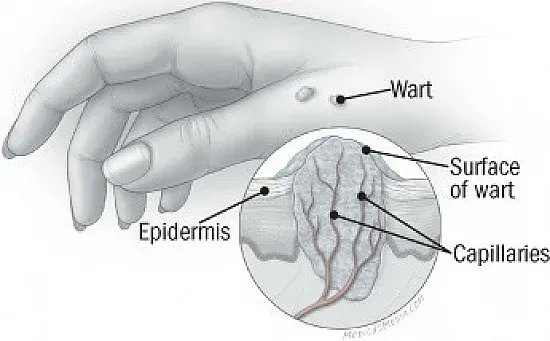
Risk Factors for Developing Plantar Warts
While anyone can develop plantar warts, certain individuals are more prone to this condition. Children and teenagers are particularly susceptible, but warts can occur at any age. Other risk factors include:
- Using communal showers or walking barefoot in damp public areas
- Having a history of plantar warts
- Suffering from eczema or other chronic skin conditions
- Having a weakened immune system
- Close contact with someone who has warts
Identifying the Symptoms of Plantar Warts
Plantar warts typically manifest as thick, rough, and often raised patches of skin on the bottoms of the feet. These warts may also feature small, black dots on the surface, which are actually dried blood vessels, or capillaries, within the wart. Plantar warts can be painful, especially when they develop in areas that bear the brunt of your body weight, such as the ball of the foot or the heel.
The pain and discomfort associated with plantar warts can make it difficult to walk or engage in other activities that involve standing or physical exertion. In some cases, the wart may cause a noticeable change in the way you walk, as you try to avoid putting pressure on the affected area.
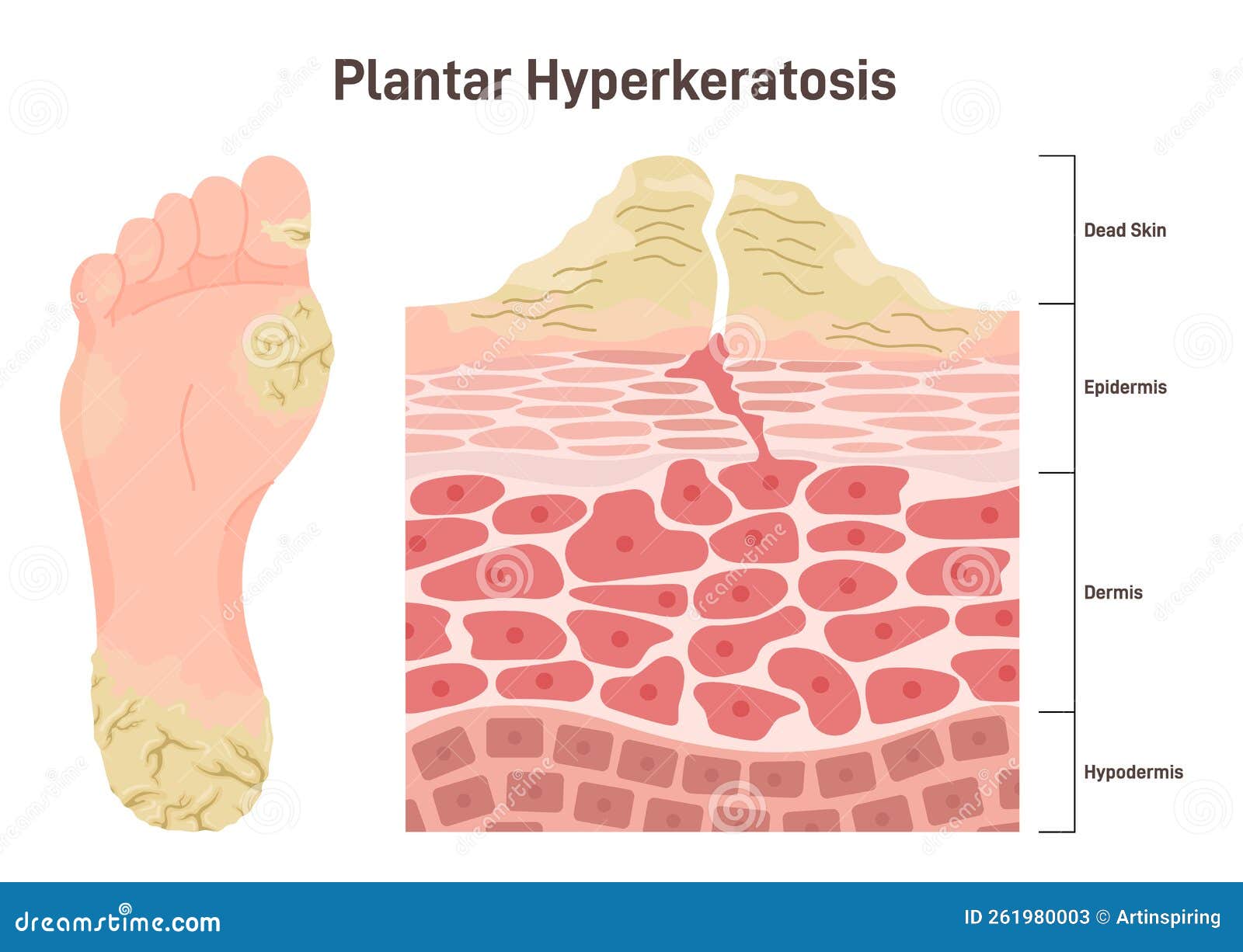
Effective Treatments for Plantar Warts
Many plantar warts will eventually go away on their own, without the need for any intervention. However, for those that are particularly painful or persistent, several treatment options are available:
Salicylic Acid
Salicylic acid is a common over-the-counter treatment for plantar warts. It can be applied directly to the wart in the form of a liquid, ointment, pad, or patch, and works by gradually dissolving the thickened, hardened skin. It’s important to follow the instructions carefully and not use salicylic acid for more than 12 weeks without consulting your healthcare provider.
Cryotherapy
Cryotherapy, or freezing the wart, is a treatment option that can be performed by a healthcare provider. Liquid nitrogen is applied to the wart using a cotton swab or spray, which can cause the wart to turn white and eventually fall off. This treatment may be slightly painful, but it can be an effective way to remove persistent plantar warts.
Medications
In some cases, healthcare providers may prescribe topical or injected medications to treat plantar warts. The effectiveness of these treatments can vary, and research on their efficacy is mixed, so it’s important to discuss the options with your provider.

When to Seek Medical Attention
If you have plantar warts that become too painful to manage or do not respond to over-the-counter and at-home treatments, it’s a good idea to consult with a healthcare provider. They can evaluate the wart, recommend appropriate treatment options, and provide guidance on managing the condition effectively.
Preventing Plantar Warts
While it’s not always possible to prevent plantar warts, there are some steps you can take to reduce your risk. Wearing proper footwear in communal areas, such as locker rooms and pool decks, can help prevent the transmission of the HPV virus. Additionally, maintaining good foot hygiene and promptly treating any cuts or abrasions on the feet can also help lower your chances of developing plantar warts.
Conclusion
Plantar warts are a common and often painful foot condition caused by the human papillomavirus. Understanding the underlying causes, risk factors, and effective treatment options can help you manage this condition effectively and minimize the impact it has on your daily life. Remember to consult with a healthcare provider if you have any concerns or if the wart becomes too difficult to manage on your own.

Understanding Plantar Warts | Saint Luke’s Health System
A
plantar wart is a small, noncancer growth on the bottom of the foot. Plantar warts
often
develop where friction or pressure occurs, such as on the ball of the foot. The word
plantar refers to the sole of the foot. Similar warts can occur on other areas of
the body
such as the hands. Plantar warts are more common in children and young adults.
What causes a plantar wart?
Plantar warts are caused by a virus called HPV (human papillomavirus).
They
can be spread by person-to-person contact. Or you can develop one if you walk barefoot
on moist surfaces infected with the virus. This might be in a community pool area
or
locker room. Wearing the correct footwear in such places can prevent them.
What are the symptoms of plantar warts?
Plantar warts cause a thick, rough, and often raised patch of skin on the bottom of
the
foot. The wart may have black dots on it. These dots are dried blood. The wart may
cause
pain or discomfort. You may also have trouble walking because of the pain.
How are plantar warts treated?
Many
plantar warts go away without any treatment. But for those that are painful or that
don’t go away, several treatments are available. The most common treatments include:
Salicylic acid. This is put directly on the
wart. It may come in the form of a liquid, ointment, pad, or patch. It’s available
over the counter. Don’t use salicylic acid treatment for more than 12 weeks
Don’t use salicylic acid treatment for more than 12 weeks
without talking with your healthcare provider.Cryotherapy. Your provider puts liquid nitrogen
on the wart with a cotton swab or spray. This treatment might be painful.Medicine. A variety of medicines can be put
on or injected into the wart. But research is mixed on how well they work.
There are many folk remedies for plantar warts, but some of these are unproven and
can
be dangerous. Talk with your provider about safe methods to try. Often your provider
Often your provider
will cut away dead parts of the wart before using other treatments.
When should I call my healthcare provider?
Call
your healthcare provider if you have plantar warts that:
- Become too painful
- Don’t go away on their own or with over-the-counter and
at-home treatments
What causes plantar warts?
Plantar warts are warts that occur on the bottoms of the feet and pads of the toes.
These warts can become very painful when they grow in places on the foot that support your weight. But what exactly causes plantar warts?
Plantar warts are caused by the human papillomavirus, or HPV. There are more than 100 types of HPV, but only some of them cause warts. HPV enters the top layer of skin through tiny cuts and causes excessive cell growth. The cells on the surface of the skin grow thicker and harder and eventually form a raised bump—a wart. Since plantar warts occur on the bottoms of the feet, they’re subjected to a lot of pressure from walking and standing. Because of this, they tend to grow inward rather than outward.
The cells on the surface of the skin grow thicker and harder and eventually form a raised bump—a wart. Since plantar warts occur on the bottoms of the feet, they’re subjected to a lot of pressure from walking and standing. Because of this, they tend to grow inward rather than outward.
What are the risk factors for plantar warts?
Some people are more likely to develop plantar warts than others. While they’re most common in children and teenagers, warts can occur at any age. You may be at a higher risk for warts, including plantar warts, if you:
- Use communal showers
- Had plantar warts before
- Have eczema or another chronic skin condition
- Have a weakened immune system
- Have close contact with someone who has warts
Are plantar warts dangerous?
No, plantar warts aren’t dangerous. They are noncancerous skin growths. However, they can be painful. Some may itch or feel tight. Plantar warts may contain tiny blood vessels, or capillaries, which appear as small, black dots on the surface of the wart. This is normal, and it’s nothing to be concerned about.
This is normal, and it’s nothing to be concerned about.
Unlike common warts, which occur on the hands and fingers and grow outward, plantar warts are often pushed inward due to the pressure from walking and standing. This can make them particularly painful, and it makes them a little harder to treat than outward-growing warts.
Are plantar warts contagious?
Yes, because plantar warts are caused by the human papillomavirus, they shed the virus, and so they’re contagious. Warts can spread from one part of the body to another, or they can spread to other people through contact with the wart or an object that’s been in contact with the wart, like a sock, shoe, shower floor, pool deck or other surface where you often go barefoot. However, not everyone who encounters the virus will get a wart.
Human papillomaviruses multiply in the skin, but that doesn’t necessarily mean you’ll develop more warts. However, if you’ve had one wart, you may be more likely to have more later on.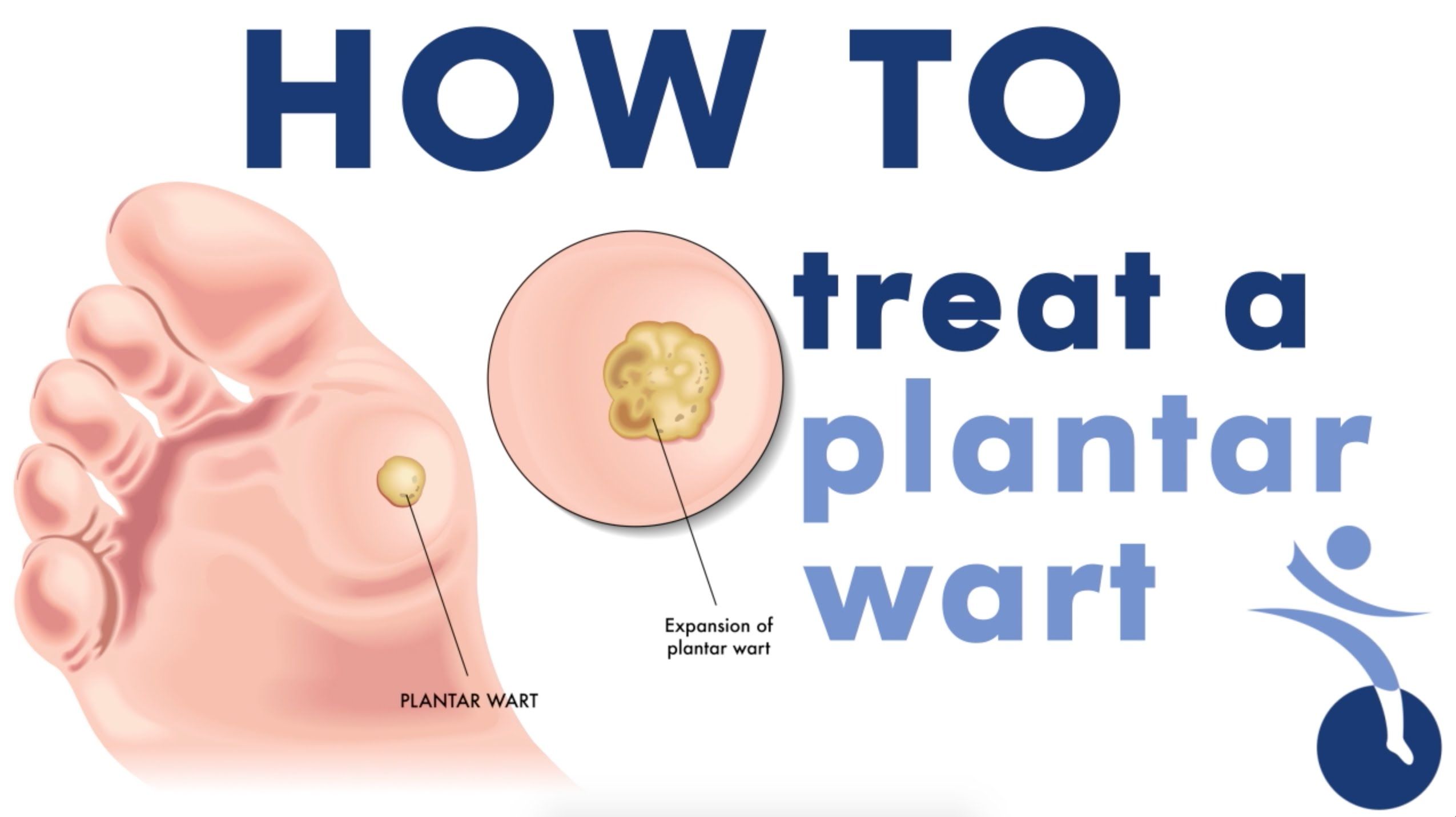 Even if you have a plantar wart removed, the virus may remain in the skin and could cause another wart in the future.
Even if you have a plantar wart removed, the virus may remain in the skin and could cause another wart in the future.
How long does it take for plantar
warts to go away?
Most plantar warts go away on their own, often after a few weeks or months. Sometimes it can take two years or longer for a wart to disappear. If you have plantar warts that aren’t bothersome, you can leave them alone and allow them to go away on their own.
If your plantar warts are causing pain, plantar wart treatments are available over the counter and by a healthcare provider.
What to do if you have plantar warts
If you have one or more plantar warts that aren’t bothering you, you can leave them alone and see if they disappear on their own. Meanwhile, you can help prevent them from spreading to other parts of your body by following these general practices:
- Leave your wart alone; don’t pick at it or scratch it, which can spread the virus and potentially cause an infection
- Whenever you touch your plantar warts, wash your hands afterward
- Keep your feet dry, and put on clean socks every day
If your plantar warts are causing pain, see a healthcare provider for a plantar wart treatment. Once they’re gone, keep a close eye on your feet, and if you notice more warts developing, consider having them removed right away, while they’re still small.
Once they’re gone, keep a close eye on your feet, and if you notice more warts developing, consider having them removed right away, while they’re still small.
Published February 2022.
Sources:
- https://doi.org/10.7556/jaoa.2018.024
- https://www.mayoclinic.org/diseases-conditions/plantar-warts/symptoms-causes/syc-20352691
- https://www.mayoclinic.org/diseases-conditions/plantar-warts/diagnosis-treatment/drc-20352697
- https://www.uptodate.com/contents/common-warts-plantar-warts-and-flat-warts-beyond-the-basics
- https://familydoctor.org/condition/warts/?adfree=true
90,000 sore warts – how to remove a wart in 2023
The concept of plantar warts, how they look
warts – these are neoplasms of the skin and mucous membranes (warts can also be observed in the mouth or on the genitals).
Warts can be caused by over 100 different types of human papillomavirus (HPV).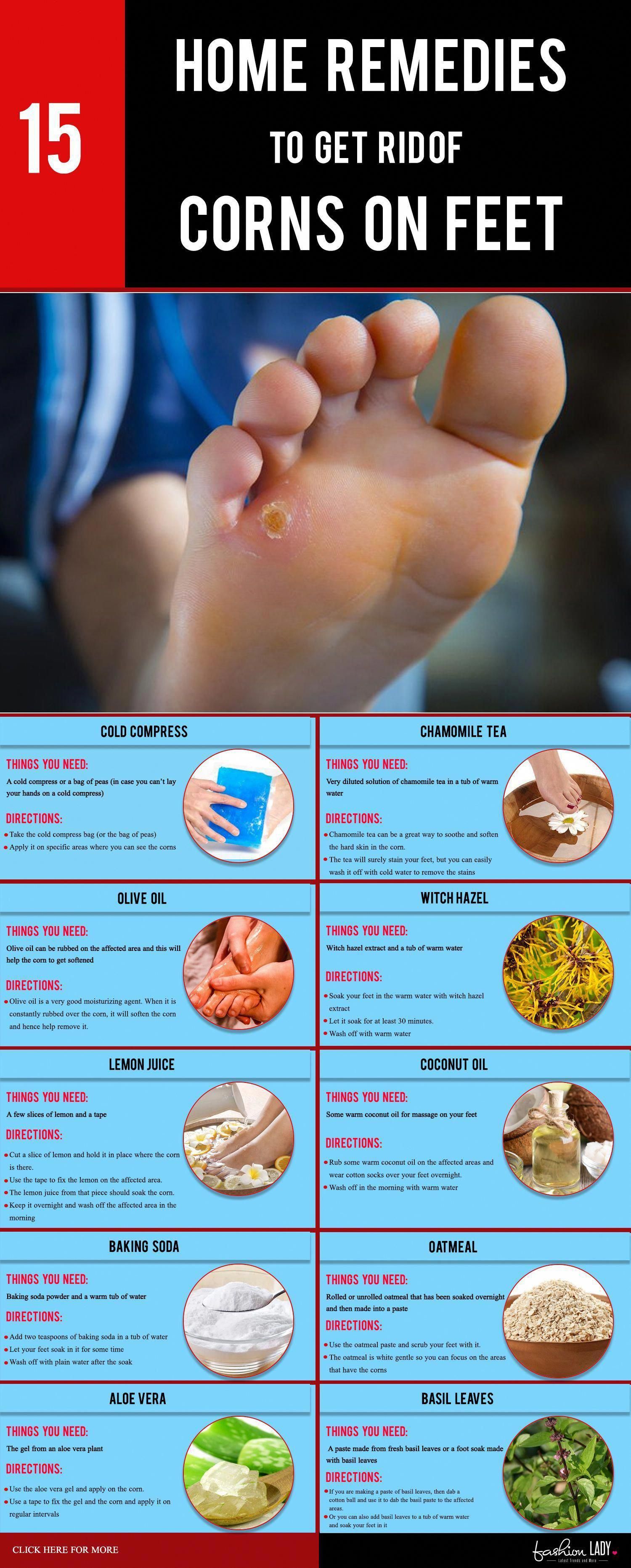 The human papilloma virus causes a thickening of the top layer of the epidermis (skin).
The human papilloma virus causes a thickening of the top layer of the epidermis (skin).
Plantar wart ( Plantar wart) is a wart that occurs and is located on the sole of the foot. Often, these warts have the appearance of a callus and resemble a callus on palpation.
Plantar warts may be small, or they may grow and cover most of the sole of the foot. They are usually painless and go away on their own, but sometimes they take several months to resolve (but can take up to 2 years).
Causes of plantar warts
Warts are usually transmitted from person to person by contact. The virus is not very virulent or able to infect another person, but sometimes infection occurs through a small defect in the skin.
Similarly, warts can spread to other parts of the body. The virus is rarely transmitted by touching an object that has been used by a previously infected person.
HPV or human papillomavirus is very common and there are more than 100 types of the virus. But only a few of them cause the appearance of warts on the legs. Other types of HPV are more likely to cause warts on other areas of the skin or mucous membranes.
But only a few of them cause the appearance of warts on the legs. Other types of HPV are more likely to cause warts on other areas of the skin or mucous membranes.
Transmission of the virus
Each person’s immune system reacts differently to the human papillomavirus (HPV). That being said, the human papillomavirus strains that cause plantar warts are not very contagious.
Thus, the virus cannot be easily transmitted by direct contact from one person to another. But it thrives in warm, humid places, so you can catch the virus by walking barefoot while visiting the pool or changing rooms.
Read more in our article: Warts appear on the skin
Types and stages of development of plantar warts 9000 4 The most common locations for plantar warts are: Plantar warts can be found singly or in groups. Plantar warts are usually painful when pressed or mechanically applied. The stages of development of plantar warts are based on the division of warts into types, according to size: Plantar wart photo sourced from https://dermnetnz.org/ Common plantar wart source https://dermnetnz.org/ Giant Plantar Warts, Source https://dermnetnz.org/ Contents Find out how to treat a plantar wart at home without pain or surgery. We will talk about effective methods that will help you deal with the problem quickly and safely. A plantar wart is a skin defect caused by the human papillomavirus. It is located on the sole of the foot and can cause serious inconvenience when walking. The treatment of a plantar wart is a rather complicated and lengthy procedure. However, there are a number of effective methods that allow you to get rid of the wart and prevent its reappearance. It is important to note that self-treatment of a plantar wart can lead to serious complications and deterioration of the general condition of the body. Therefore, at the first signs of the disease, it is necessary to contact an experienced specialist to receive qualified assistance. A plantar wart is a small tumor-like growth on the sole of the foot caused by the human papillomavirus (HPV). It can be painful and interfere with walking. Plantar warts often occur in children and adolescents, but can occur at any age. Plantar warts usually have a black dotted center and a yellowish rim. This is due to the accumulation of blood vessels and dead tissue. They can result from injury or pressure on the foot. It is important to note that a plantar wart should not be confused with calluses or insanity. Calluses are caused by friction, and insanity is a deep inflammatory skin disease. Ensure correct diagnosis before starting treatment. Soreness – A plantar wart can cause discomfort and pain when walking, especially if located on the phalanx of the toe. As a rule, the larger the wart, the more soreness. Yellowish tint – Sometimes plantar warts can have a yellowish tint, which is due to the death of skin cells, the formation of keratin and the penetration of dirt and dust into the wound. Bleeding – in some cases, if the plantar wart is damaged, bleeding may occur. Development of calluses – Due to constant friction with shoes, a large plantar wart can turn into a callus and cause dryness and flaking of the skin around it. The appearance of new warts – plantar warts can spread to other areas of the foot, as well as to the nails. A plantar wart is one of the most common forms of warts that can appear on different parts of the body. It occurs as a result of a viral infection with the human papillomavirus (HPV). It turns out that plantar warts often develop in people who are constantly in damp rooms and wear tight shoes. Attention also needs to be paid to the characteristics of the body, in some cases people with a reduced immune system are also prone to the likelihood of warts. There is also a possibility of infection HPV through various surfaces such as slippers, towels, swimming pools and other public places with difficult sanitary conditions. Plantar wart is a fairly common disease that not only causes discomfort, but can also lead to complications. Often patients ask the question: is it possible to treat a plantar wart at home? One of the most popular treatments for plantar warts is the use of special medicines, such as salicylic acid or urea-containing ointments. The advantages of such treatment include a relatively quick result and a minimal risk of complications. However, when using these products, it is necessary to follow certain rules of hygiene and protect the wart from injury and overdrying. Another popular treatment is the use of folk remedies. Vegetable oils, plant infusions, as well as the use of onions or garlic for several days can act as such remedies. However, the risk of complications when using folk remedies is higher than when using drugs. In any case, when treating a plantar wart, it is important to remember that the result can be achieved only with an integrated approach to treatment and compliance with all doctor’s recommendations. Dealing with a plantar wart can be a long and frustrating process. However, there are effective alternative treatments that help with such a problem. Traditional methods may take extra time, but can be an effective way to get rid of a plantar wart without the intervention of a surgeon. However, if you have any doubts about the effectiveness of any of these methods, you should contact your doctor immediately. Salicylic acid – often used as the main topical treatment for warts. It makes the skin chloride and provides an additional mechanical effect when removing accumulated cells. Imiquimod is a new generation of drugs containing immunomodulatory properties. Triclopol is a topical medicine that acts on the principle of cryoencapsulation. It creates a mechanical effect on the wart, destroying its cells at low temperatures. Interferon – used to restore the body’s immune functions. This drug maintains the level of protective functions and reduces the likelihood of recurrence of warts. Polyvinylpyrrolidone-iodine – contains bactericidal properties and fights well against viruses that cause warts. Amiksin is a powerful immunomodulator that activates the body’s defense mechanisms. As a result, the process of self-regulation improves and the immune system fights infections that cause warts more successfully. A plantar wart is not only a cosmetic defect, but also a possible cause of pain and discomfort when walking. For more effective treatment of a plantar wart, it is also necessary to consult a doctor if it reappears after treatment. When visiting a healthcare facility with a plantar wart, patients may be offered several treatments. One of them is cryotherapy. During the procedure, under the influence of liquid nitrogen, the wart and neighboring tissues freeze, as a result of which it dies and disappears. Another method is laser wart removal. The laser beam accurately and gently removes the affected area of the skin without leaving scars. This procedure is also accompanied by minimal discomfort for the patient. Another option is electrocoagulation. Under the influence of electric current, the wart ceases to receive blood and nutrition, it soon dies and disappears. It is important to note that such procedures should only be trusted by qualified doctors, since improper removal of the wart can lead to the formation of new formations, sterile conditions are the key to successful treatment. Plantar wart is a disease caused by the human papillomavirus that causes warts on the feet. The immune system plays an important role in the treatment of this disease. This is due to the fact that our body itself can fight the virus that causes the appearance of warts. Strong immunity can prevent the appearance of warts on the feet. It can also stop the development of already existing warts. Therefore, the normalization of the immune system will improve the patient’s condition and solve the problem with the plantar wart. Some treatments for plantar warts are aimed at strengthening the immune system. For example, a vitamin complex, antioxidants, yoga and other methods help boost immunity and make it more resistant to attacks from viruses and infections. It is also important to eliminate the cause of the fall in immunity, such as stress, lack of sleep, poor nutrition, etc. To do this, you need to lead a healthy lifestyle and eliminate factors that negatively affect the state of immunity. Plantar wart is a disease caused by the human papillomavirus. Like any other viral infection, once it enters the body, it remains there for life. Therefore, in order to prevent re-infection, a number of precautions must be observed. In the event of a plantar wart, see a professional dermatologist-podologist as soon as possible. Without self-treatment and attempts to cut out the wart. Plantar wart is a condition that requires immediate treatment. If a wart is left untreated, it can grow and spread to other areas of the skin. The sooner treatment begins, the higher the chances of a complete cure. Treatment methods for plantar warts are quite diverse, and each person can choose the most suitable method for himself. Some prefer the treatment of folk methods, others – the use of medications. Before starting treatment, it is worth consulting with a dermatologist and choosing the best treatment method. In addition to traditional treatments, there are ways to prevent plantar warts. This is regular washing of feet and shoes, wearing dry socks, avoiding shoes of unreliable quality. Timely prevention will help to avoid the appearance of warts on the sole. It must be remembered that plantar warts can affect a person’s quality of life. This may lead to decreased activity, irritability and discomfort when walking. Plantar wart is caused by the human papillomavirus (HPV) that enters the skin through microtrauma. Symptoms of a plantar wart include pain when walking, thickening of the skin, the formation of a rough wart tumor with black dots, which are vascular capillaries. There are several treatments for plantar warts, including keratolytics, cryotherapy, electrocautery, laser therapy, and surgical removal of the wart. The cryotherapy treatment for a plantar wart lasts approximately 1 to 5 minutes. They appear as thick, rough, calloused bumps on the soles of the feet. In addition, plantar warts often have many small black dots on the surface, which are actually tiny blood vessels.
They appear as thick, rough, calloused bumps on the soles of the feet. In addition, plantar warts often have many small black dots on the surface, which are actually tiny blood vessels. Plantar Wart: Effective Treatments
90 059 1.
 1 What is plantar wart?
1 What is plantar wart? 13.0.5 How effective are keratolytic agents in the treatment of plantar warts?
13.0.5 How effective are keratolytic agents in the treatment of plantar warts?
What is a plantar wart?
What are the symptoms of a plantar wart?

Causes of a plantar wart
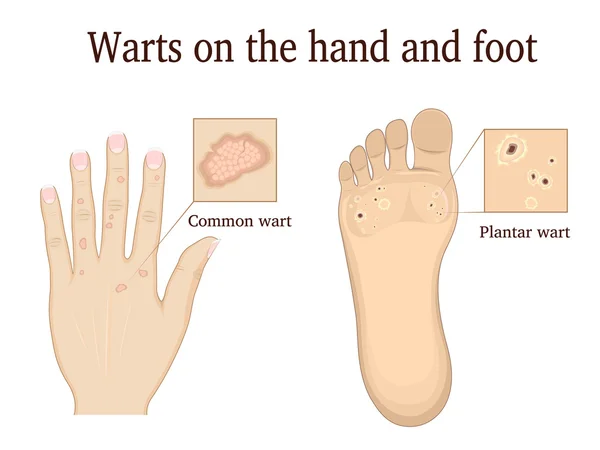
Treatment of plantar warts: home methods
 Therefore, if you find a wart on your foot, you should not postpone a visit to a dermatologist or pediatrician.
Therefore, if you find a wart on your foot, you should not postpone a visit to a dermatologist or pediatrician. Traditional Treatments for Plantar Wart
 Repeat the procedure 2-3 times a day for 2-3 weeks.
Repeat the procedure 2-3 times a day for 2-3 weeks. Medicines and preparations for the treatment of plantar warts
Topical products
 This medicine fights not only with warts, but also improves the activity of the protective functions of the body.
This medicine fights not only with warts, but also improves the activity of the protective functions of the body. Internal preparations
When should I see a doctor if I have a plantar wart?
 If the wart causes pain, begins to bleed, change color and shape, this is a serious signal to see a doctor.
If the wart causes pain, begins to bleed, change color and shape, this is a serious signal to see a doctor. Hospital Treatments for a Plantar Wart

The role of the immune system in the treatment of plantar wart

Preventing the recurrence of a plantar wart
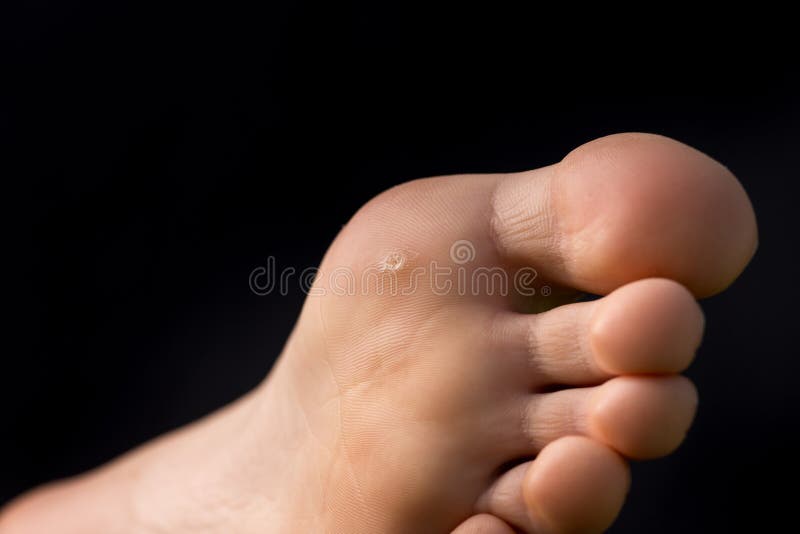
Conclusions
 Therefore, it is important to understand that the treatment of warts is not only a problem of a cosmetic order, but also of health in general.
Therefore, it is important to understand that the treatment of warts is not only a problem of a cosmetic order, but also of health in general. Related videos:
Q&A:
What causes a plantar wart?
What are the symptoms associated with a plantar wart?
What are the treatments for plantar warts?
How long does a cryotherapy procedure take to treat a plantar wart?
:max_bytes(150000):strip_icc()/common-causes-of-foot-and-ankle-swelling-1337777-5c04ad02c9e77c0001b0f9e0.png)

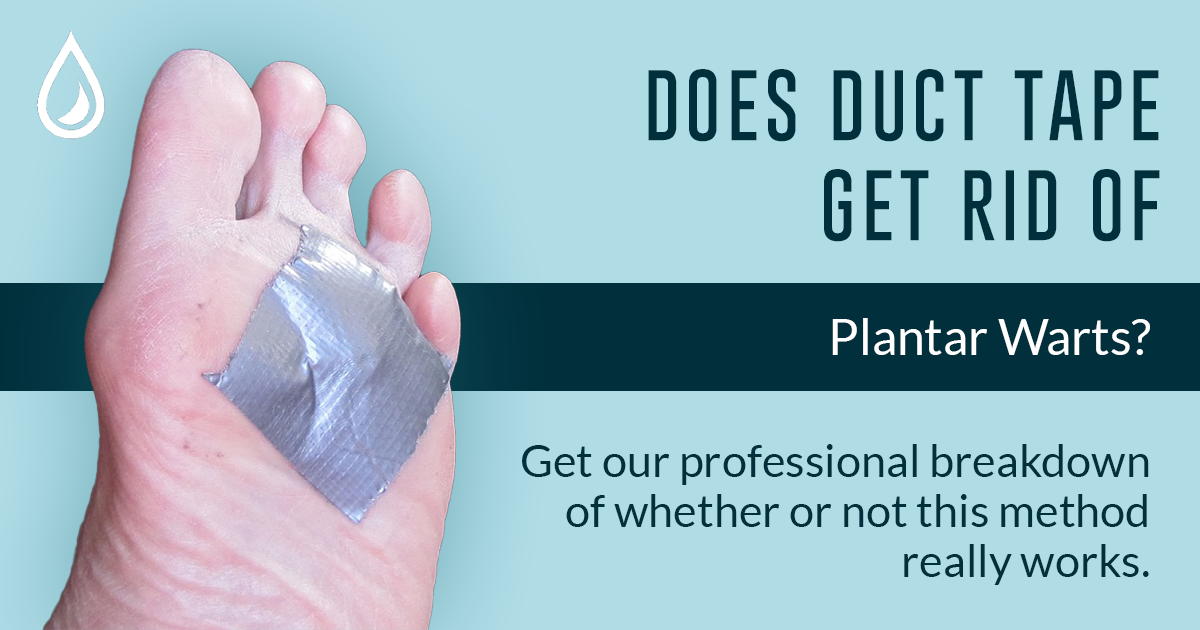 Don’t use salicylic acid treatment for more than 12 weeks
Don’t use salicylic acid treatment for more than 12 weeks